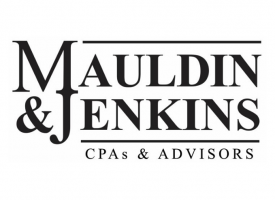By: Hope Pendergrass, CPA, Partner
The federal government has issued the 2023 Interim Final Rule and the Obligation Interim Final Rule that expand eligible uses for CSLFRF and clarify an area of frequent confusion.
Coronavirus State and Local Fiscal Recovery Fund (CSLFRF) is the unwieldy name applied to a series of cash infusions from the U.S. Treasury Department — monies that have been hugely helpful in allowing smaller governmental entities to fill in revenue gaps and cover the costs of meeting pandemic-related needs.
These funds offer significant flexibility that allows states, counties, and municipalities to use the money in ways that align with leaders’ priorities, but that flexibility is not unlimited. Broadly speaking, the federal government has required that CSLFRF funds go toward:
- Replacing public sector revenue lost as a result of the pandemic
- Responding to the pandemic’s health and economic consequences
- Bolstering the earnings of essential workers
- Improving infrastructure that delivers water, sewer and broadband internet access
2023 Interim Final Rule
In its 2023 Interim Final Rule (IFR), the federal government affirms continuing eligibility for all the uses defined in earlier rules. The obligation date of December 31, 2024, remains unchanged for these uses.
The 2023 IFR also lays out regulations describing additional ways that recipients are allowed to use CSLFRF funding. Provisions in the 2023 Consolidated Appropriations Act include three new options for state and local governments to consider as they weigh where to direct their CSLFRF dollars:
- Emergency relief to help address designated natural disasters that affect the area
- Any of 26 Surface Transportation Projects specified in the 2023 Consolidated Appropriations Act
- Certain Title I projects as part of CDBG and Indian CDBG programs
One important fact to note about the new uses is their differing Period of Performance dates. The Period of Performance for Emergency Relief use eligibility is December 31, 2026. For Surface Transportation and eligible Title 1 projects, the Period of Performance ends on September 30, 2026.
You can find a (relatively) brief summary in the Overview of the 2023 Interim Final Rule.
Obligation Interim Final Rule
State and local government leaders have wrestled with numerous questions surrounding the most precise and accurate definition of “obligation” as the term applies in CSLFRF regulations. The Treasury Department released an Obligation Interim Final Rule late in 2023 to address these questions.
The Obligation IFR amends the definition of “obligation” to include certain costs incidental to the award. Recipients must estimate and report these costs in accordance with future updates to the CSLFRF Compliance and Reporting Guidance, including costs associated with requirements for:
- Single audit
- Record retention and internal controls
- Reporting and compliance (including monitoring subrecipients)
- Property standards
- Environmental compliance
- Civil rights and nondiscrimination
In general, recipients can NOT re-obligate funds after December 31, 2024. For example, if a project in progress requires a change order that increases the costs of the project, then that change order must be funded with non-CSLFRF monies. Recipients can still charge indirect costs through 2026.
Subrecipients are not subject to the December 31, 2024 obligation deadline. However, in most cases, recipients cannot swap out contracts and/or subrecipients for CSLFRF awards. Recipients can replace a contract/subaward after December 31, 2024, if any of the following are true:
- The contactor/subrecipient defaults, goes out of business or is otherwise unable to perform under the contract/subaward.
- The recipient and contractor/subrecipient mutually agree to terminate the contract for convenience.
- The recipient enters into the contracts with good faith but later determines the contact/subaward was not properly awarded (Ex. the contractor was not eligible).
You can see a summary of the Obligation IFR in the Obligation Interim Final Rule Quick Reference Guide.
Comply with Confidence
State and local governments are using CSLFRF to accomplish numerous goals that improve economic performance, infrastructure, and quality of life for residents. These funds are extremely valuable, but they come with no shortage of strings. Your Mauldin & Jenkins advisor can help you leverage these dollars for maximum impact while maintaining strict compliance with all eligibility and reporting requirements.


